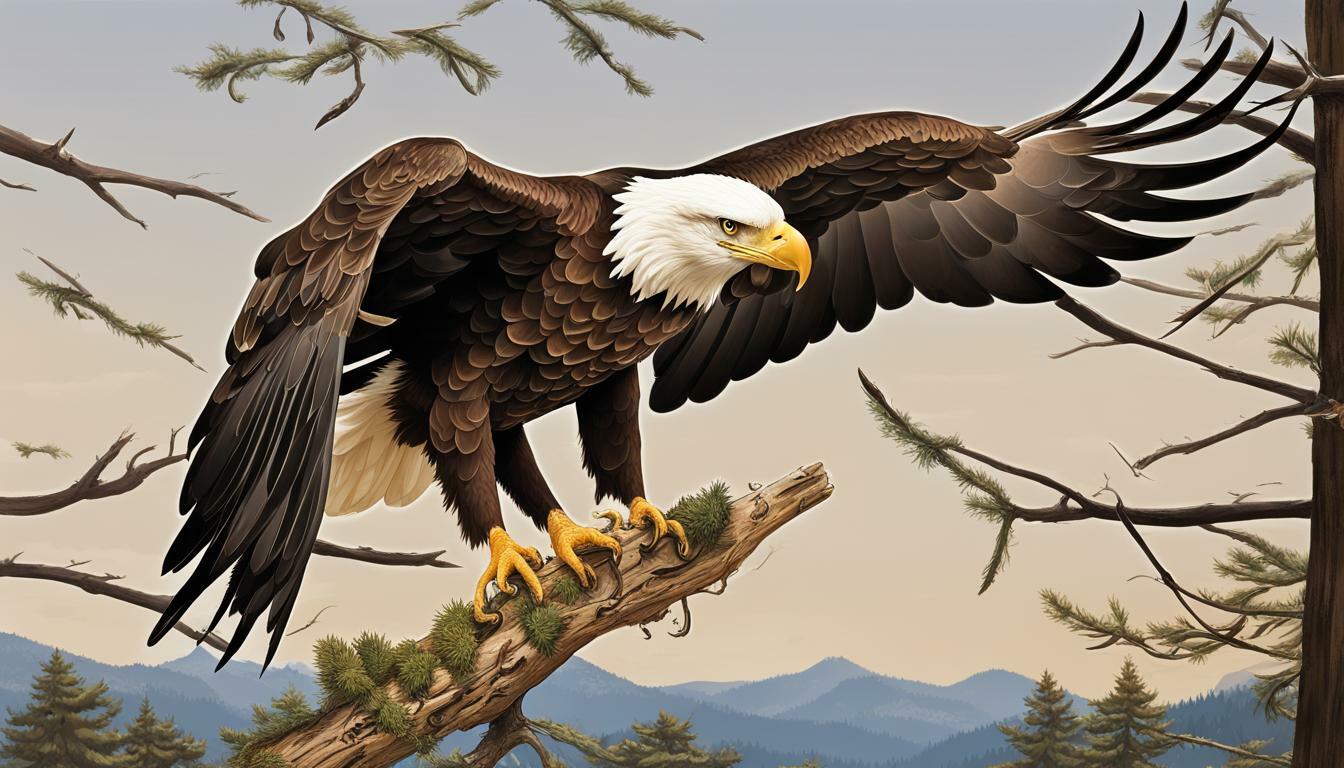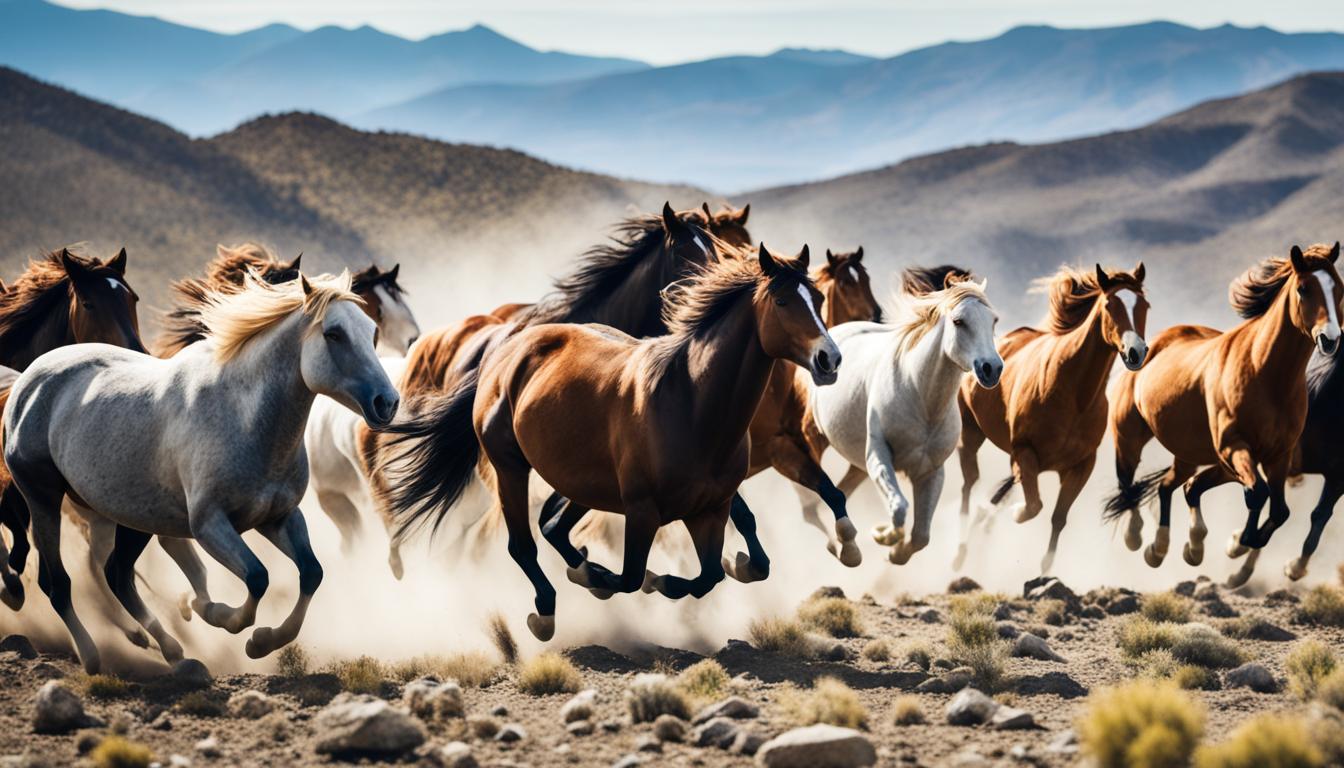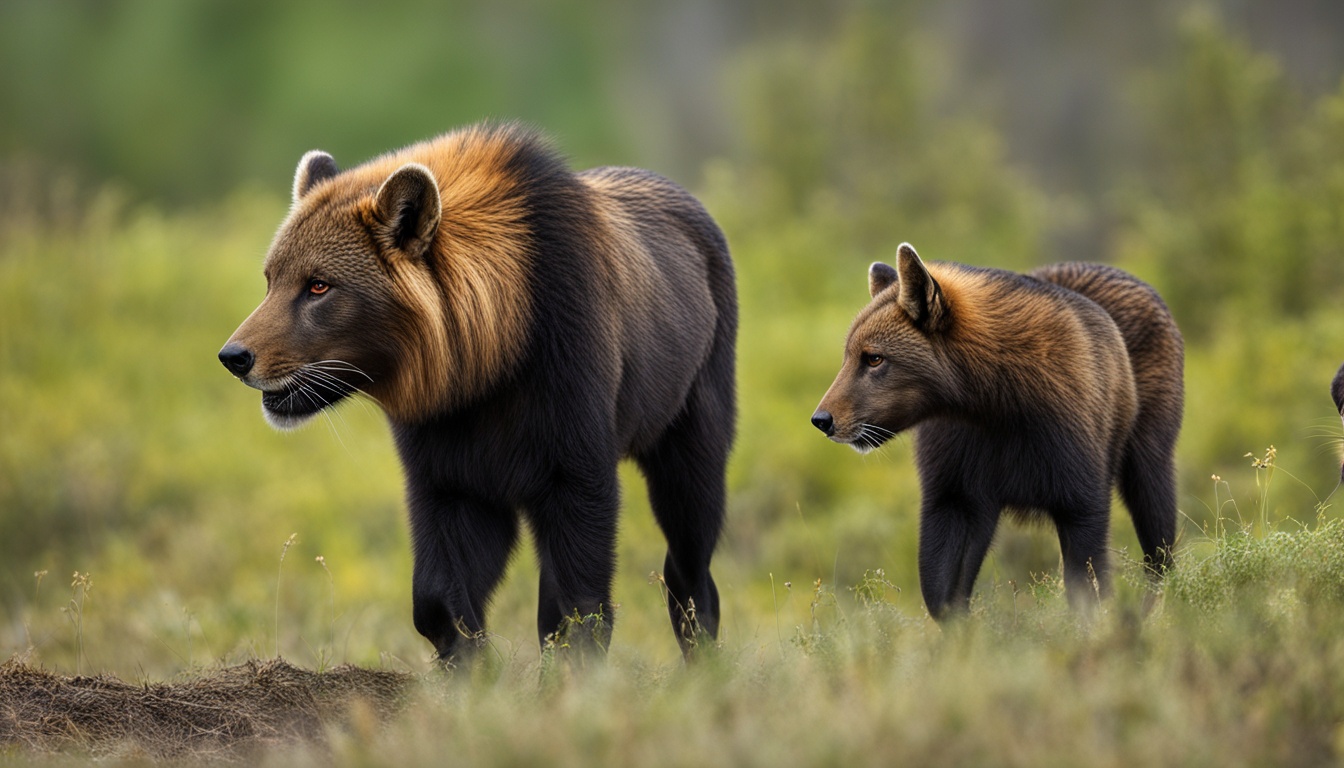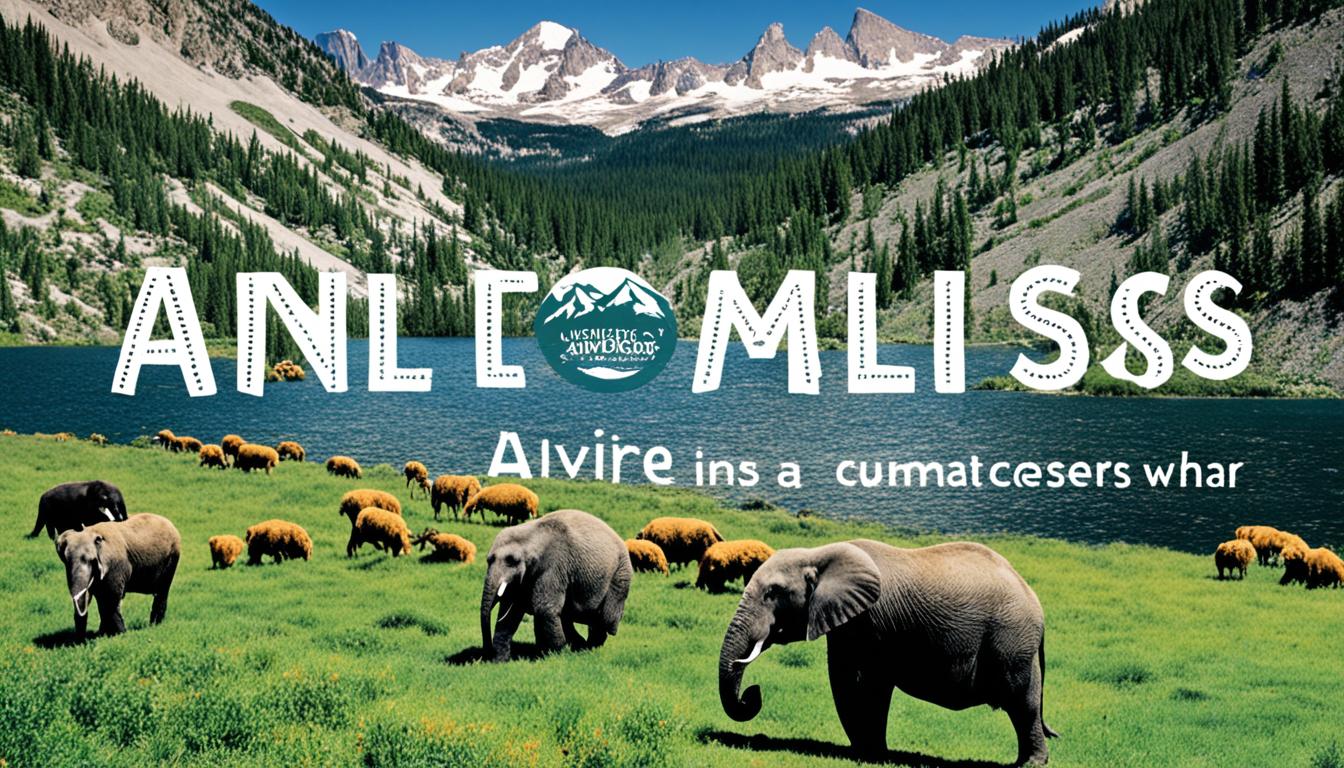Welcome to this article where we will explore the diet of one of America’s most iconic birds of prey – the bald eagle. Many of us have likely seen these majestic creatures soaring through the skies or perched atop a tree, but have you ever wondered what they eat? Specifically, do bald eagles eat smaller birds?
The question of whether bald eagles eat smaller birds has piqued the curiosity of many bird enthusiasts. While bald eagles are primarily known for their fishing abilities, they are also skilled hunters. In this article, we will uncover the truth behind their diet and explore the factors that influence their feeding habits.
Key Takeaways
- Bald eagles are skilled hunters and primarily feed on fish, but they are also opportunistic feeders and consume a variety of prey.
- Contrary to popular belief, bald eagles do eat smaller birds and their diverse diet plays an important role in maintaining a balanced ecosystem.
- Understanding the bald eagle’s diet and predatory behavior is essential for conservation efforts aimed at protecting their habitats and food sources.
Understanding the Bald Eagle’s Predatory Behavior
When it comes to the prey of bald eagles, it’s important to understand their hunting behavior. Bald eagles are apex predators, meaning they are at the top of their food chain and have few natural predators. They are known for their keen eyesight, which allows them to spot prey from great distances, and their powerful talons, which they use to catch and kill their prey.
Bald eagles primarily feed on fish, using their talons to snatch them from the water’s surface. However, they are opportunistic feeders and will also consume a variety of prey, including small mammals, reptiles, and even carrion. This adaptability allows them to survive in a range of environments.
The Possibility of Bald Eagles Hunting Smaller Birds
While bald eagles are not known for hunting smaller birds, there have been instances where they have been observed doing so. Bald eagles have been seen snatching small birds out of the air or catching them on the ground. This behavior is more commonly observed in areas where fish are scarce or during the winter months when other food sources are limited.
The Diverse Diet of Bald Eagles
Bald eagles are known for their love of fish, and indeed, fish make up the majority of their diet, especially for those who live near water sources such as rivers, lakes, or coastal regions. However, bald eagles are not picky eaters and will consume a variety of prey based on availability and preference.
Their diet includes small mammals such as rabbits, squirrels, and rodents, as well as reptiles like snakes and turtles. In addition, bald eagles will also consume carrion, or the remains of dead animals, including roadkill. This allows them to take advantage of food that is readily available without much effort.
Bald eagles are opportunistic feeders, meaning they will eat whatever prey is most easily available. In some cases, this can include smaller birds, which can make up a small portion of their overall diet. Bald eagles have been known to prey on birds such as gulls, ducks, and even owls.
It is important to note that while bald eagles do consume smaller birds, they are not considered to be a significant threat to the bird populations as a whole. Bald eagles play a crucial role in maintaining a balanced ecosystem, just like other top predators, and their predation helps to regulate populations of their prey species.
The Prey of Bald Eagles: Small Birds Included
You may be wondering whether bald eagles actually eat smaller birds. The answer is yes! While bald eagles primarily feed on fish, they are also known to prey on smaller bird species.
Studies have shown that bald eagles have been observed preying on a variety of bird species, including waterfowl, gulls, and even other raptors, such as ospreys and peregrine falcons. They have also been recorded taking advantage of nestling birds and scavenging on carcasses of dead birds.
Did you know? Bald eagles have been known to steal food from other birds, such as ospreys and crows.
It’s important to note that bald eagles don’t exclusively hunt smaller birds, but rather take advantage of a variety of prey depending on availability and location. While their diet may include smaller birds, they also consume a variety of mammals, reptiles, and fish.
Factors Influencing Bald Eagle Feeding Preferences
As opportunistic feeders, bald eagles have a diverse diet that varies depending on factors such as their geographical location, availability of prey, and seasonal variations.
In coastal areas, for example, eagles primarily feed on fish, while in inland areas, they may also consume small mammals and reptiles.
The availability of prey also plays a significant role in their feeding preferences. During the winter, when fish populations are low and a majority of water sources are frozen, eagles may resort to scavenging on carrion or hunting small mammals and birds such as rabbits and ducks.
Additionally, breeding eagles may exhibit different feeding preferences than non-breeding eagles, as they require more protein-rich food to sustain the energy they expend in nesting and caring for their young.
Understanding these factors is crucial in monitoring and preserving the bald eagle populations and their food sources.
Beyond Birds: Other Prey of Bald Eagles
While bald eagles are often associated with their diet of fish and smaller birds, they are also known to consume a variety of other prey.
Mammals such as rabbits, squirrels, and even deer fawns have been recorded as prey for bald eagles. They have also been observed hunting reptiles like turtles and snakes. In addition, bald eagles are opportunistic feeders and will scavenge on carrion, including dead fish, deer, and even roadkill.
The adaptability of their diet is an important factor in their success as a species. This wide range of prey allows them to survive in a variety of habitats, and their opportunistic scavenging behavior ensures they have a consistent food source.
The Bald Eagle’s Role in the Ecosystem
Bald eagles play a crucial role in maintaining a balanced ecosystem. As top predators, they help regulate the population dynamics of their prey species, including smaller birds. By preying on weaker individuals, they prevent overpopulation and maintain the health of their prey populations.
Bald eagles also act as indicators of ecosystem health. Their sensitivity to changes in their environment, such as water pollution or habitat destruction, serves as a warning sign for potential problems. Monitoring their populations and protecting their habitats can help ensure the health of the entire ecosystem.
Conservation Efforts and the Bald Eagle’s Diet
Due to habitat loss, hunting, and the use of pesticides, the bald eagle population plummeted in the mid-20th century. However, conservation efforts have helped the species recover, and understanding their diet has played a crucial role in these efforts.
Protecting their habitats and food sources has been a priority for conservationists. The bald eagle’s diet is diverse, and their prey includes species that are also important for other species in the ecosystem. Protecting bald eagle habitats and food sources has helped to ensure the survival of not only the bald eagle but also other species that depend on these resources.
Under the Bald and Golden Eagle Protection Act of 1940, it is illegal to hunt, kill, or disrupt bald eagles and their nests. Habitat conservation efforts have also been successful, with the species being removed from the endangered species list in 2007.
Understanding the bald eagle’s diet has also led to efforts to reduce the use of harmful pesticides, which can accumulate in the bodies of prey species and cause harm to the eagles that consume them. These efforts have resulted in a decrease in the amount of pesticides in the environment, leading to a healthier ecosystem for the bald eagle and other species.
In conclusion, protecting the bald eagle’s habitat and food sources, along with reducing the use of harmful pesticides, has been crucial to the species’ recovery. Understanding their diet has played an important role in these efforts, highlighting the importance of studying wildlife and its role in the ecosystem.
Conclusion
Now you know that bald eagles do eat smaller birds, along with a diverse range of prey. Understanding their predatory behavior and diet is crucial in conservation efforts to protect their habitats and food sources. As top predators, bald eagles play an essential role in maintaining a balanced ecosystem and the recovery of their population is a testament to the success of conservation efforts.
Do Bald Eagles Use Their Hunting Abilities to Protect Themselves from Predators?
Bald eagles employ various bald eagle predator protection methods to safeguard themselves against potential threats. These magnificent birds rely on their exceptional hunting abilities not only to secure prey but also to deter predators. With their sharp eyesight, powerful beaks, and strong talons, bald eagles possess the necessary tools to defend themselves and ensure their survival in the wild.
FAQ
Q: Do bald eagles eat smaller birds?
A: Yes, bald eagles do eat smaller birds as a part of their diverse diet.
Q: What is the diet of bald eagles?
A: The diet of bald eagles primarily consists of fish, but they are opportunist feeders and consume a variety of prey, including smaller birds, mammals, reptiles, and carrion.
Q: Are bald eagles top predators in the ecosystem?
A: Yes, bald eagles are considered top predators in the ecosystem. Their predation helps maintain a balanced ecosystem and impacts the population dynamics of their prey species, including smaller birds.
Q: What factors influence the feeding preferences of bald eagles?
A: The feeding preferences of bald eagles are influenced by factors such as geographical location, availability of prey, and seasonal variations.
Q: What role do bald eagles play in the food chain?
A: Bald eagles play an important role in the food chain as top predators. Their predation helps regulate the populations of their prey species and contributes to the overall balance of the ecosystem.
Q: What other prey do bald eagles consume besides birds?
A: Besides birds, bald eagles also consume fish, mammals, reptiles, and carrion, showcasing the adaptability of their diet.
Q: How have conservation efforts contributed to the recovery of bald eagles?
A: Conservation efforts have aided in the recovery of bald eagle populations by protecting their habitats and food sources. Understanding their diet and predatory behavior has been crucial in implementing effective conservation measures.











